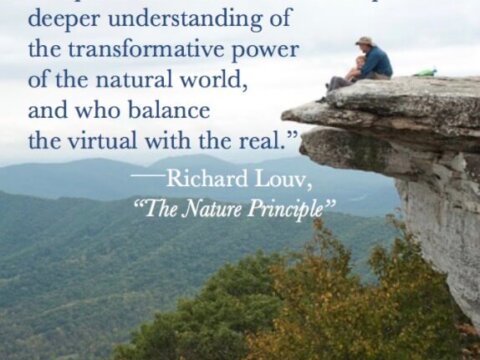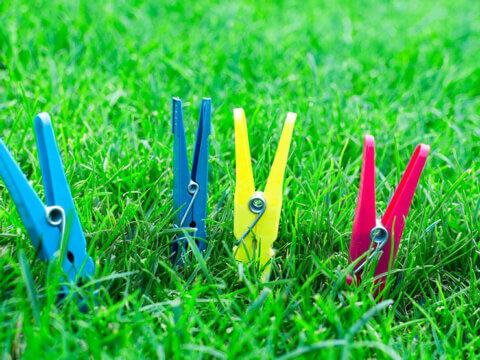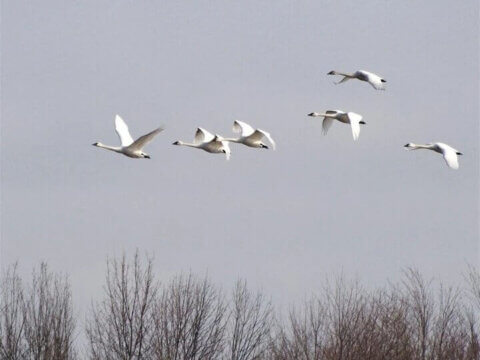Meet the Lakeside Nature Challenge

The Iowa Lakeside Laboratory and Regents Resource Center is a biological field station located on a 147-acre campus managed as a nature preserve on Lake West Okoboji in northwest Iowa. Our mission is to engage learners of all ages to learn about nature in nature, using the outdoors as our classroom.
If this were a normal spring, there would be school groups here every day immersed in outdoor learning, conducting investigations, building inquiry and observation skills. We would be looking forward to the summer season of college courses, nature camps and citizen science opportunities.
But now with schools canceled and ‘sheltering-in-place’ practices, we must find different ways of reaching out – with short notice and little planning! The Covid-19 pandemic isn’t changing what we do at Iowa Lakeside Lab, but how we do what we do. And what we do seems more important now than ever – connecting people with nature and the world around us.
Part of our new approach is the Lakeside Nature Challenge. The Lakeside Nature Challenge is a daily video that infuses education, experiments, and experiences to urge kids to go outside and interact with their surroundings. We initially thought of this idea at the onset of the coronavirus pandemic, as schools closed, and parents began to wonder how they could continue their children’s education. We wanted something that would give parents something to teach or do with their kids, while simultaneously giving kids a reason to go outside and do something that wasn’t on a screen.
Because we understand that many viewers may not have access to diverse natural areas we have on our Lakeside grounds, we try to focus on things everyone can access, do, or investigate in their back yards or if they live in an apartment complex, be it the weather or the sky above or a tree or bush in the back yard, or a way to attract wildlife to their yards.
For the Challenge, we aim to demonstrate that there are things to learn and do outside no matter the weather or time of year. We hope to model that there is “no bad weather, just bad clothing.” However, we understand there are days when it might be too wet or cold out, so in addition to outdoor investigations that can be done during inclement weather – like experiments for catching raindrops or measuring snowmelt – we have indoor projects that can later be taken outdoors, like making nature journals or building feeders to attract birds.
Through this project, we hope to encourage people to be creative with what is around their homes, so they do not need to go out and buy things. For example, making a bird feeder out of milk cartons, or making a nature journal from recycled paper – you can make journal covers from wallpaper scraps or old folders you can decorate, and for the inner pages you can fold a used piece of paper (if it is printed one-sided) in half to create blank pages.
We would like to stay away from describing Nature Challenges as “activities” to thinking about them as “challenges” or “learning experiences”: opportunities to develop inquiry and observational skills. Take the snowmelt Nature Challenge episode. If it were approached simply as an activity, students would set different colors of paper in the snow and see what happened. There is nothing wrong with doing just that, but you can take it deeper. So, we modeled wondering what would happen with the different color strips, making a prediction, and recording that in the journals we had made. Then we had to come up with a way to measure, collect, communicate and represent data from the experiment, and then make arguments from evidence to explain what happened.
In the same vein as thinking about “activities” as “learning opportunities,” we also encourage thinking about making things not just as a “craft” but from a science and engineering perspective. Instead of a series of ‘how-to’ steps, we encourage experiments with different materials, making proto-types and modifying designs to make them better. The wind-sock episode is an example. We showed different proto-types and how they evolved before landing on a final design and challenged viewers to do the same and share their designs.
We are also trying to think of scientific instruments and tools students can make to deepen their investigations. The windsock can be both something to play with outdoors, but you can also use it to measure wind speed and direction by calibrating it with the Beaufort scale, a topic we covered in yet another episode.
We have seen a great response from our audience and have seen the Challenge videos reposted by several different teachers, organizations, and individuals to get it to the people that may need it. We look forward to continuing this series with fresh and captivating ideas for children and families to participate in, growing their bond with nature and amongst themselves.
Learn more about the Iowa Lakeside Laboratory here.
-
Voices
CAMPING WHILE PARENTING: A Mother-Son Adventure
-
Feature
A common thread: Indigenous-led foundation weaves together activism and art, climate and community
-
Network News
Community Spotlight: Prescribe Outside
-
Voices
That’s nice, mija: Finding common language in nature connections
-
Richard Louv
"HUMMINGBIRD PARENTS": Seven Actions Parents Can Take To Reduce Risk And Still Get Their Kids Outside




